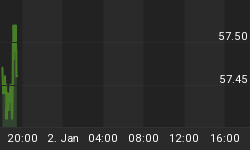Below is an excerpt from a commentary originally posted at www.speculative-investor.com on 21st December, 2008.
Changes in money-supply trends affect prices in ways that are often difficult to predict, thanks in part to the lengthy and variable delays involved. However, it is still possible to explain much of what has happened to prices and much of what will likely happen to prices in terms of money-supply changes.
The best explanation for what has happened to prices over the past few months isn't the now popular notion that the economy is experiencing deflation. From our perspective this isn't a good explanation because we define deflation as a contraction in the total supply of money, and over the past few months the supply of money has been growing at an accelerated pace.
We appreciate that some analysts define deflation as a contraction in the total supply of money AND credit, but we don't like this definition. The main -- but not the only -- reason we don't like it is that changes in the supply of credit do not have long-term effects on money purchasing power UNLESS they lead to changes in the money supply. In other words, the changes in the supply of credit that do have long-term effects on purchasing power will eventually be captured in money-supply aggregates such as TMS (True Money Supply).
We also appreciate that the behaviour of most financial markets is consistent with the view that deflation is underway. It could therefore be argued that regardless of whether deflation is or isn't occurring as per a strict monetary definition of the phenomenon, the short-term practical investment implications are the same as if deflation were actually occurring. This argument is correct, but to come to grips with the situation from both theoretical and practical bases it isn't necessary to pretend that deflation is occurring. The reason is that a far more logical explanation is staring us in the face -- an explanation that is consistent with both the monetary backdrop and the performances of the financial markets. We are referring to the DELAYED response of prices to changes in money-supply trends. The following excerpt from our 18th May commentary, written at a time when the fear of inflation was high, expands on this point:
"Our statement that the US inflation rate is presently in the bottom quartile of its 10-year range may appear to be absurd given that the prices for various commodities and everyday goods/services are rocketing upward, but today's rising prices are largely due to the massive inflation that occurred years ago; specifically, the massive inflation in the US during 1998-2004 and outside the US during 2003-2006. There is often a multi-year lag between the cause (money-supply growth) and the effect (rising prices), which is one reason why so few people are able to see the link between money-supply changes and purchasing power changes.
During any long-term inflation cycle the major beneficiaries of the inflation will be the sectors of the economy where the supply/demand fundamentals are the most bullish, that is, those sectors where there is relative scarcity. Commodities should continue to be the major beneficiaries during the current inflation cycle -- a cycle that's probably nowhere near an end -- because that's where the relative scarcity now lies, but the downward correction in the money-supply growth rate over the past few years creates an intermediate-term hazard for commodity investors.
We expect that wider recognition of the inflation problem will eventually bring about a major decline in Treasury bond prices (a major rise in bond yields), but the temporarily SLOW rate of US money-supply growth over the past 2-3 years could support US T-Bond prices over the coming 6 months by putting irresistible downward pressure on the prices of industrial commodities." [Emphasis added]
The point we were trying to make in our 18th May commentary and in a number of other commentaries during May-August of this year was that even as the general fear of inflation was rising, the relatively slow rate of money-supply growth over the preceding 2-3 years suggested that the so-called inflation trade (bullish commodities / bearish bonds) was set for a reversal. As things turned out the reversal was far more dramatic than we had envisaged, but the fact is that the goings-on of the past few months can be explained by the preceding sharp decline in monetary inflation.
As an aside, the reversal was so dramatic because 'bubble activities' (economic activities that are only feasible as long as the money supply is expanding at a rapid rate) had come to play an unusually large role within the economy.
The following chart of the TMS year-over-year growth rate shows the rapid monetary expansion that set the stage for the 2003-2007 boom and the substantial reduction in the rate of monetary expansion that set the stage for the 2007-20?? bust. It also reveals that the seeds are now being sown for the next major upward trend in prices.

Based on the lengthy delays that typically occur between changes in money-supply trends and changes in price trends it could be at least two years before the next general upward trend in prices gets underway. For example, the year-over-year TMS growth rate moved into double digits around mid-2001 and stayed there for three years, but equity and commodity prices didn't commence major upward trends until mid-2003.
We aren't offering a free trial subscription at this time, but free samples of our work (excerpts from our regular commentaries) can be viewed at:http://www.speculative-investor.com/new/freesamples.html.
















